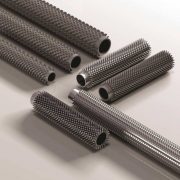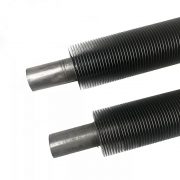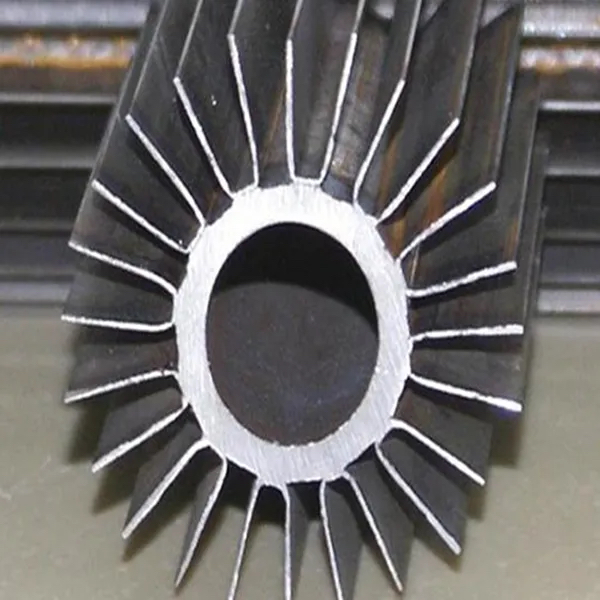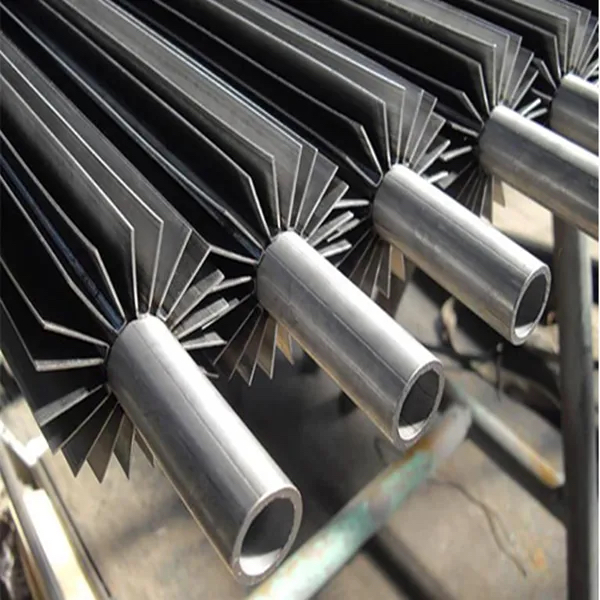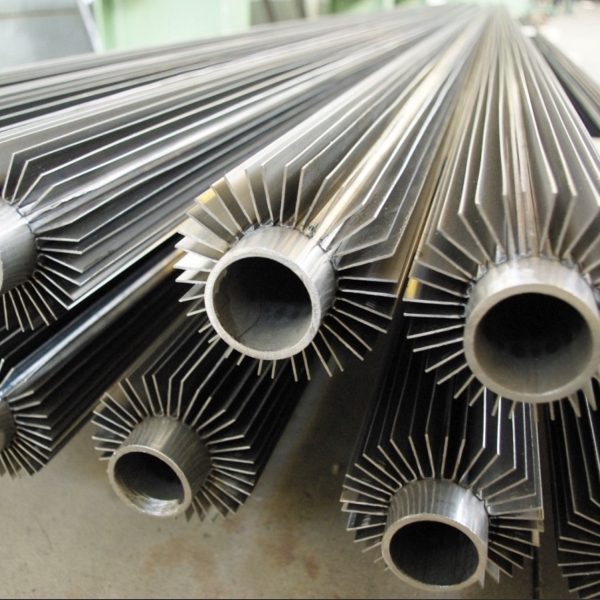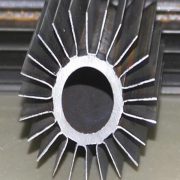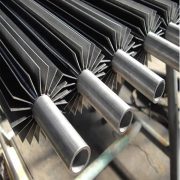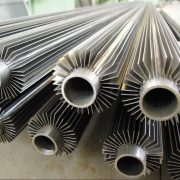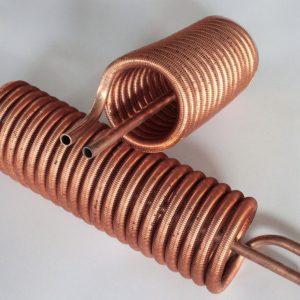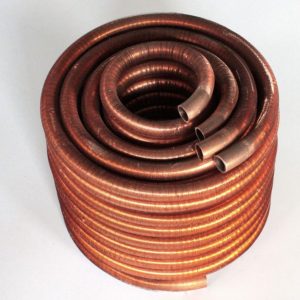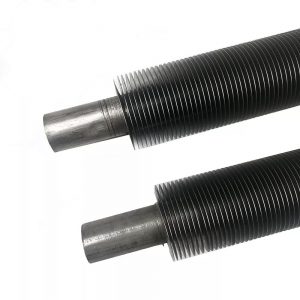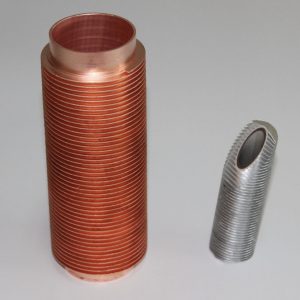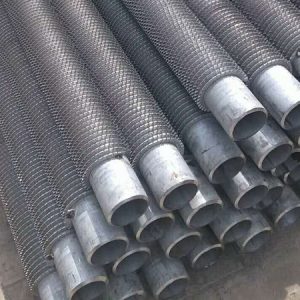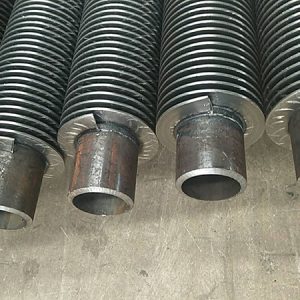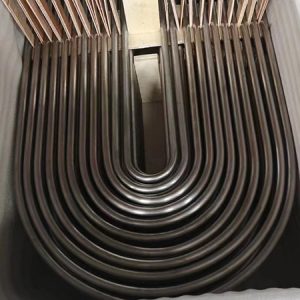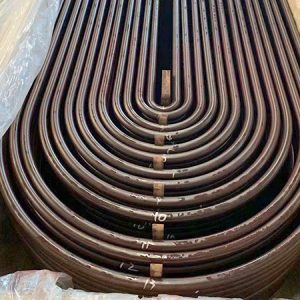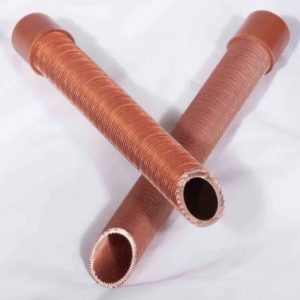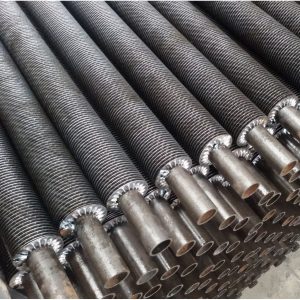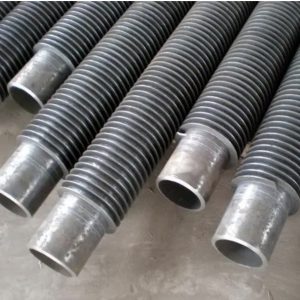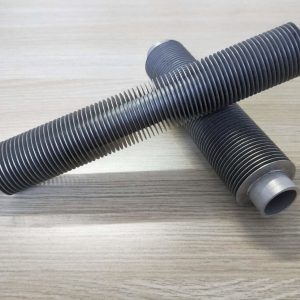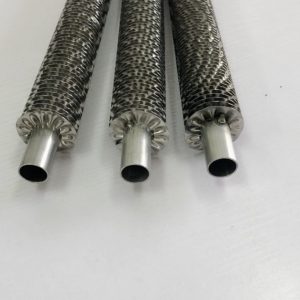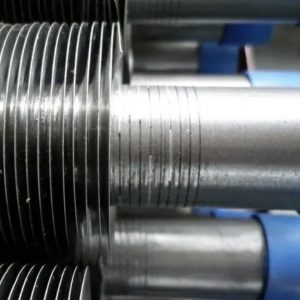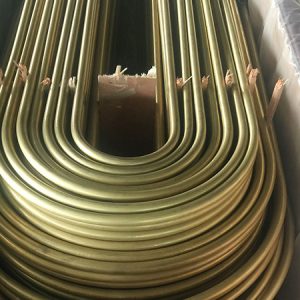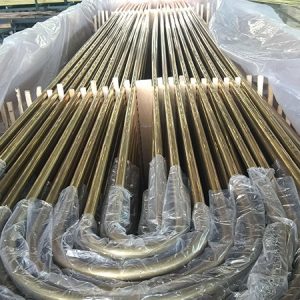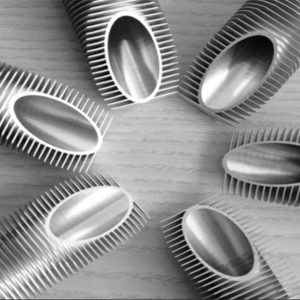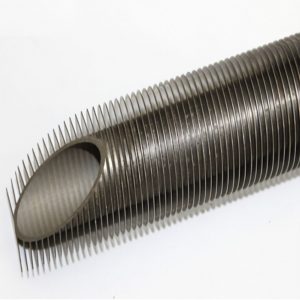Longitudinal Finned Tubes
Longitudinal finned tubes are produced by welding the fins with resistance along the length of the tube. The fins first form a u-shaped channel, allowing each of the u-shaped legs to form a fin. The channel is cut to the appropriate length and then welded into place along the length of the tube and resistance. The channels are a pair of welded, polar opposites, so the number of fins specified must be a multiple of four.
For a given tube or tube size, the desired heat transfer surface area per tube unit length can be obtained by specifying the appropriate fin height and number of fins. The maximum number of fins depends on the outer diameter of the tube – the larger OD tube can accommodate more fins.
- Description
- Product introduction
- Product characteristics
- Inquiry
Fin tube reference
Carbon steel fins are available on carbon, stainless steel, or copper tube. Please call for a specific size if not listed

| Type | Description | Base tube O.D. (mm) |
Fin specification (mm) | ||
|---|---|---|---|---|---|
| Fin pitch | Fin height | Fin thick | |||
| Embedded | G-type fin tueb | 16-63 | 2.1-5 | <17 | ~0.4 |
| Extruded | Single metal combined metal | 8-51 | 1.6-10 | <17 | 0.2-0.4 |
| Low fin tube t-type fin tube | 10-38 | 0.6-2 | <1.6 | ~0.3 | |
| Bamboo tube corrugated tube | 16-51 | 8-30 | <2.5 | / | |
| Wound | l/kl/ll type fin tube | 16-63 | 2.1-5 | <17 | ~0.4 |
| String | String fin tube | 25-38 | 2.1-3.5 | <20 | 0.2-0.5 |
| U-type | U-type tube | 16-38 | / | / | / |
| Welding | HF-welding fin tube | 16-219 | 3-25 | 5-30 | 0.8-3 |
| H/HH type fin tube | 25-63 | 8-30 | <200 | 1.5-3.5 | |
| Studed fin tube | 25-219 | 8-30 | 5-35 | φ5-20 | |
According to user needs, we can produce all kinds of steel strip winding finned tube and steel aluminum composite finned tube.
Materials
Carbon steel fins are available on carbon, stainless steel, or copper tube. Please call for a specific size if not listed

We offer you a broad portfolio of materials and can expand our offering at any time to meet your specific needs regarding thermal conductivity, mechanical properties, or corrosion resistance.
- Base tube: Carbon steel, Stainless steel, Copper, Cupro Nickel, Aluminium, Alloy Steel
- Fin: Carbon steel, Stainless steel, Copper, Aluminium
- Rings: Carbon steel, Aluminium, Hot dip galvanizing
Product introduction:
As with welded spiral finned tubes, this welded structure can be used for virtually any heat transfer application.
The choice between longitudinal finned tube and spiral finned tube seems to depend mainly on geometric factors. For example, some heater structures consist of finned tubes inserted into other tubes -- longitudinal finned tubes are an obvious choice for such applications. In other cases, users prefer the longitudinal finned tube installation, where the tube will be in a vertical direction - the finned direction facilitates fluid drainage on one side of the finned tube.
Longitudinal finned structures are most commonly used in shell and tube applications, such as in double-tube and multi-tube heat exchangers, where the longitudinal finned tube is telescopic in the hole of a larger tube shell. Heat is transferred between the fluid flowing through the finned tube hole and the fluid flowing through the shell hole.
The fluid flowing through the shell hole is forced to flow between the longitudinal fins. In this case, the spiral fin prevents the flow of the fluid, rather than allowing it to flow between the fins.
Product characteristics:
- Improve heat transfer efficiency in efficient space.
- Reduces installation space on required heat transfer surfaces
- Reduce the cost of the equipment, and have a high operational reliability.
- The pressure drop on the side of the tube is reduced and the operation cost is reduced.
- The stiffness of steel tube is improved, and the seismic performance of steel tube is improved.
- Enhance heat transfer, reduce flow resistance and metal consumption
Manufacturing process
Longitudinal finned tubes are produced by welding the fins with resistance along the length of the tube. The fins first form a u-shaped channel, allowing each of the u-shaped legs to form a fin. The channel is cut to the appropriate length and then welded into place along the length of the tube and resistance. The channels are a pair of welded, polar opposites, so the number of fins specified must be a multiple of four.
For a given tube or tube size, the desired heat transfer surface area per tube unit length can be obtained by specifying the appropriate fin height and number of fins. The maximum number of fins depends on the outer diameter of the tube - the larger OD tube can accommodate more fins.
Competitive Advantage:
1. Longer working life than others ordinary welding helical fin tubes.
2. Much safer and energy saving.
3. Increase the heat transfer rates for viscous liquids.
4. Perforated fin type used whenever drainage of liquid from fin channels become a problem.
5. Longitudinal fin tubes are widely used in horizontal heat exchangers.
Applications:
The longitudinal finned tubes are widely used in following fields.
1. Chemical, petrochemical, oil, and power industry
2. Heat exchanges
3. Fired heaters
4. Gas coolers and heaters
5. Tank heaters.

